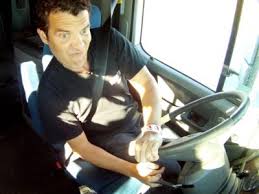Defensive Driving Tip #30: Know How To Recover From A Skid
What’s the best defensive driving way not to get into a skid? Avoid it in the first place! One of the best ways to avoid trouble on the road (not just skids) is to drive smoothly. True professionals drive so seamlessly that you do not feel anything when they shift, turn, or brake. Plan ahead, watch carefully, and slow down, especially if you are unfamiliar with the road. Skids almost always happen because the vehicle was running too fast for conditions.
Be careful when conditions might be slippery, as this is when most skids occur. But no matter what the road’s surface condition is, skids are caused by driver error. Try to turn too sharply, enter a turn too quickly, or use excessive acceleration or braking, and you’ll get the chance to practice skids! Keep your brakes maintained and properly adjusted, because a lateral imbalance in your brakes can cause or aggravate a skid.
A defensive driving instructor will tell you there are two common types of skids. “Oversteer” (or fishtailing) occurs when your front wheels are taking a shorter path than desired and the rear-end breaks loose and fishtails. This is the result of power and side forces causing loss of traction on the rear wheels; there is too much power applied for the existing steering input and the resulting side forces cause the rear wheels to break free, often as a result of trying to accelerate out of a turn. “Understeer” (or plowing) occurs when you have too much steering input for the power you are applying (too sharp an angle between the tires and the direction of motion), and the front wheels skid ahead as a result.
Professional defensive driving instructors advise a new way of teaching skid recovery, instead of the old rule, which was, “Turn into the skid.” They say this “new” way is more understandable to non-professionals, but either way, they adamantly say the result is the same. This change was made because many folks didn’t clearly understand what “turn into the skid” means.
If you find yourself in an over-steer skid, professional defensive driving instructors advise first thing to do is get off the gas, keep your foot off the brakes, or smoothly release brake pressure if already applied, and if you are driving a standard shift vehicle, disengage the clutch. Quickly turn the steering wheel in the direction you want the front of the car to go (down the road). Specifically, this means align your tires with the direction of your intended travel. As your vehicle turns back in the correct direction, you must then counter steer in time to stop the turning and stay on your desired path. If you do not do this promptly, the vehicle will continue to turn past your intended direction, and you may then skid in that direction. You may have to counter-steer more than once to get things under control.
[Editor’s Note: There are two situations where the previous techniques could actually make the skid recovery more difficult. When you are driving either a front-wheel drive vehicle or a rear-wheel drive with the four-wheel drive engaged, a quick reduction on the accelerator can cause a result in a loss of control that mimics what happens when the brake pedal is depressed — namely, the front wheels are slowed faster than the rear wheels increasing the over-steer skid problem. What is generally recommended is to place the vehicle into neutral (or depress the clutch) to allow the front wheels to coast as the vehicle is turned in the direction described above. My own experience is that control is much easier to reacquire by applying a steady pressure on the gas pedal as one “drives” out of the skid, but this assumes that the driver was traveling an appropriately slow speed to begin with. Our thanks to reader L.N. from York, PA, for reminding us of this issue.]
For an under-steer skid, slightly reduce your steering input while slowing (without heavy braking) so you’ll regain your directional control as the tires again grip the road surface. In this skid, the critical issue is to reduce speed so that you can regain a grip on the road and complete your turn. Even just a slight decrease in steering input, combined with the reduction in speed, may be enough to stop the skid from progressing.
These techniques are something you need to practice. If there are any high performance driving schools in your area, take advantage of the “safety” course they offer and you’ll get the opportunity to practice skid recovery under safe, controlled conditions. You’ll have a better idea of what to do, and a better idea of your own capabilities behind the wheel. I guarantee you will be a safer driver. If you do get a traffic ticket take our defensive driving course. www.2passdd.com
